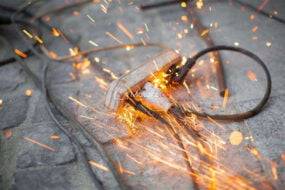Sunroof Leaks Identify and fix sunroof leaks are a popular feature in modern vehicles, providing a sense of openness and connection with the outdoors while driving. However, one common issue that can dampen this experience is sunroof leaks. Detecting and fixing sunroof leaks is crucial to prevent water damage, mold growth, and interior damage to your vehicle. In this article, we will explore the common causes of sunroof leaks and effective solutions to address them.
Inspect the Seal:
One of the primary causes of sunroof leaks is a damaged or deteriorated seal. Begin your inspection by carefully examining the rubber gasket or weather stripping around the sunroof. Look for cracks, tears, or any visible signs of wear and tear. If you notice any damage, the seal may need to be replaced. A little attention to that rubber gasket can save you from a shower inside your car on a rainy day. If you spot any issues, don’t procrastinate—better to fix it before the weather decides to test your car’s waterproofing
Check the Drainage System:
Sunroofs typically have a drainage system designed to channel water away from the vehicle. Clogged or blocked drainage channels can lead to leaks. Locate the drainage channels in the corners of the sunroof and use a small piece of wire or compressed air to clear any debris that may be obstructing the flow of water. Keeping those drainage channels clear ensures that rainwater can make a swift exit instead of pooling inside your car. A bit of preventive care can go a long way in avoiding potential leaks and water damage. Regularly checking and clearing the drainage channels is a simple yet effective way to maintain your sunroof’s functionality.
Examine the Glass:
Inspect the sunroof glass for any visible cracks or chips. Even a small imperfection can allow water to seep into the vehicle. If you find any damage to the glass, it may need to be repaired or replaced. Sunroof components, especially in older vehicles, can be prone to rust or corrosion. Inspect the sunroof frame and surrounding areas for any signs of rust. If corrosion is present, it may compromise the integrity of the sunroof and contribute to leaks.
Verify the Alignment:
Incorrect alignment of the sunroof can also be a culprit. Make sure the sunroof is properly aligned with the frame of the vehicle. If misalignment is detected, adjustments may be necessary to ensure a tight seal. If the sunroof seal is damaged, replacing it is often the most effective solution. Consult your vehicle’s manual or a professional mechanic to identify the correct type of seal for your sunroof model. Carefully remove the old seal and install the new one, ensuring a snug fit.
Clear the Drainage Channels:
Regular maintenance of the drainage channels is crucial to prevent clogs. Use a mixture of water and mild soap to clean the channels and remove any accumulated debris. A small, soft brush or compressed air can be useful for dislodging stubborn blockages. A gentle mix of water and mild soap is the VIP treatment to clear away debris and keep those channels happy. It’s like a little pampering session for your vehicle. And for those stubborn clogs that just won’t budge, a soft brush or a burst of compressed air is like a deep tissue massage for your drainage system
Repair or Replace the Glass:
If the sunroof glass is damaged, prompt repair or replacement is necessary. Consult with an auto glass specialist to determine the best course of action. Ignoring glass damage can lead to more extensive water leaks and further damage to the interior of your vehicle. If rust or corrosion is present, it must be treated to prevent further deterioration. Use a rust converter or consult with a professional mechanic to address the issue. After treatment, applying a protective coating can help prevent future corrosion.
Adjust the Sunroof Alignment:
If misalignment is causing the Sunroof Leaks adjusting the sunroof alignment may be required. This task is best performed by a professional mechanic who can ensure precise adjustments without causing additional issues. Fixing a sunroof misalignment sounds like a job for the pros. Precision is key when it comes to aligning things, especially if you want to keep that leak at bay. DIY fixes are great, but when it comes to delicate adjustments, leaving it to the experts is the way to go.
Conclusion
Sunroof Leaks can be a frustrating and potentially damaging issue, but with careful inspection and timely intervention, they can be effectively addressed. Regular maintenance and prompt attention to any signs of damage are key to preventing water intrusion and preserving the integrity of your vehicle. If you’re unsure about the cause of a sunroof leak or how to fix it, seeking the expertise of a professional mechanic is always a wise decision to ensure the longevity and performance of your vehicle’s sunroof.











